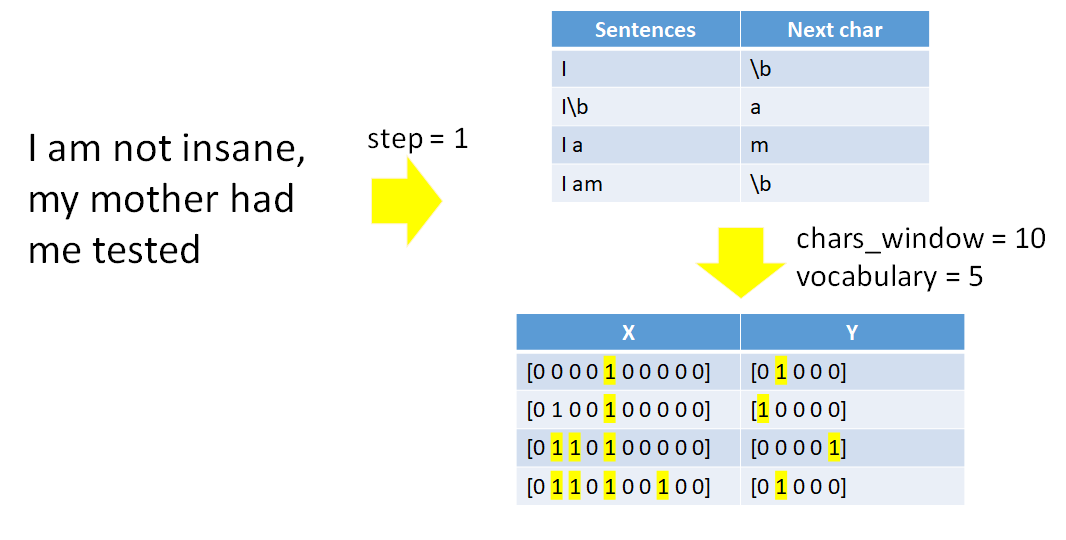Text Generation Models
Recurrent Neural Networks (RNNs) for Language Modeling with Keras

David Cecchini
Data Scientist
Similar to a classification model
The Text Generation Model:
- Uses the vocabulary as classes
- The last layer applies a softmax with vocabulary size units
- Uses
categorical_crossentropyas loss function
Example model using keras
model = Sequential()model.add(LSTM(units, input_shape=(chars_window, n_vocab), dropout=0.15, recurrent_dropout=0.15, return_sequences=True))model.add(LSTM(units, dropout=dropout, recurrent_dropout=0.15, return_sequences=False))model.add(Dense(n_vocab, activation='softmax'))model.compile(loss='categorical_crossentropy', optimizer='adam')
But not really classification model
Difference to classification:
- Computes loss, but not performance metrics (accuracy)
- Humans see results and evaluate performance.
- If not good, train more epochs or add complexity to the model (add more memory cells, add layers, etc.).
- Used with generation rules according to task
- Generate next char
- Generate one word
- Generate one sentence
- Generate one paragraph
Other applications
- Name creation
- Baby names
- New star names, etc.
- Generate marked text
- LaTeX
- Markdown
- XML, etc.
- Programming code
- News articles
- Chatbots
Data prep

Let's practice!
Recurrent Neural Networks (RNNs) for Language Modeling with Keras

